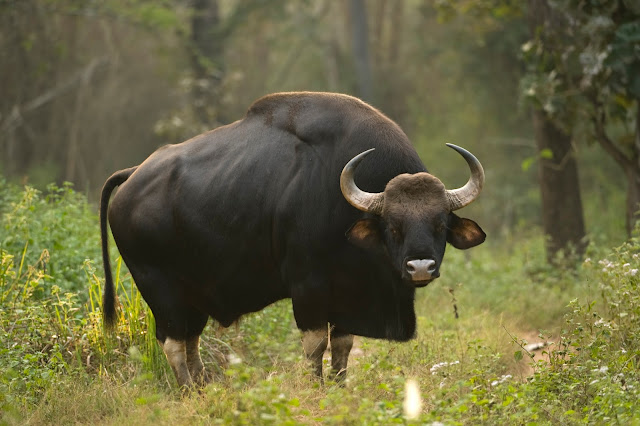Gharial- The fish eating crocodile
Now take safari of river and meet with king of river "Crocodile".
This post is all about the most rarest and unseen crocodile "Gharial- The Fish eating crocodile".
People think that it is most dangerous river reptile and man eater because of world wide image of crocodile, alligator and other members of the same family, but in actual it is fish eating crocodile and the most endangered reptile.
Introduction
- The Gharial (Gavialis gangeticus) also known as the gavial, and the fish eating crocodile, is a crocodile of the family Gavialidae, native to the northern part of the Indian Subcontinental.
Characteristics
- The gharial is characterized by its extremely long, thin jaws, which are regarded as an adaptation to a primarily piscivorous diet. Males reach up to 6 m (20 ft.) with an average weight of around 160kg (350 lb).
- It is dark or light olive above with dark cross-bands and speckling on the head, body and tail. Dorsal surfaces become dark, almost grey-black, at about 20 years of age.
- The average size of mature gharials is 3.5 to 4.5 m (11 to 15 ft.). The largest recorded length is 6.25m (20.5 ft.) and the largest recorded weight is 977 kg (2,154 lb).
- Hatchlings approximate 37 cm. Young gharials can reach a length of 1 m in 18 months. The average body weight ranges from 159 to 250 kg (351 to 551 lb).
- Males commonly attain a total length of 3 to 5 m, while females are smaller and reach a body length of up to 2.7m to 3.75 m.
- The life span of the gharial is not exactly known, however it is thought to be around the same span as the other reptiles being 50-60 years in the wild.
Gharial Behaviour and Diet
- The young gharials prey primarily on small invertebrates such as insects, small frogs.
- The mature adults feed almost solely on fish. The gharials numerous needle-like teeth re perfect for holding on to the struggling, slippery fish.
- Although primarily fish eaters, some individuals have been known to scavenge dead animals.
Gharial Reproduction
- The gharials mating season is during November through to December and well into January.
- The nesting and laying eggs take place in the dry season of march, April and May. This is because during the dry season rivers shrink slightly and the sandy river banks are available for nesting.
- Between 30 and 50 eggs are laid into the hole that the female has dug and it is covered over carefully.
Population of Gharial in India
- Chambal river (Uttar Pradesh) accounts for the majority of gharial population in the country . Out of 1500 gharials in India, about 1200 are found in Chambal river alone.
- Studies estimate the total number of breeding adults gharials in the country to be less than 200.
Gharial Conservation
- In the 1970s the gharial came to the brink of extinction and even now remains on a severely endangered species list. The conservation efforts of the environmentalists in cooperation with several governments has led to some reduction in the threat of extinction.
- Some hope lies with the conservation and management programs in place as of 2004.
- Full protection was granted in the 1970s in the hope of reducing poaching losses, although these measures were slow to be implemented at first.
- Now there are 9 protected areas for gharials in India which are linked to both captive breeding and ranching operations where eggs collected from the wild are raised in captivity and then released back to the wild.






Comments
Post a Comment